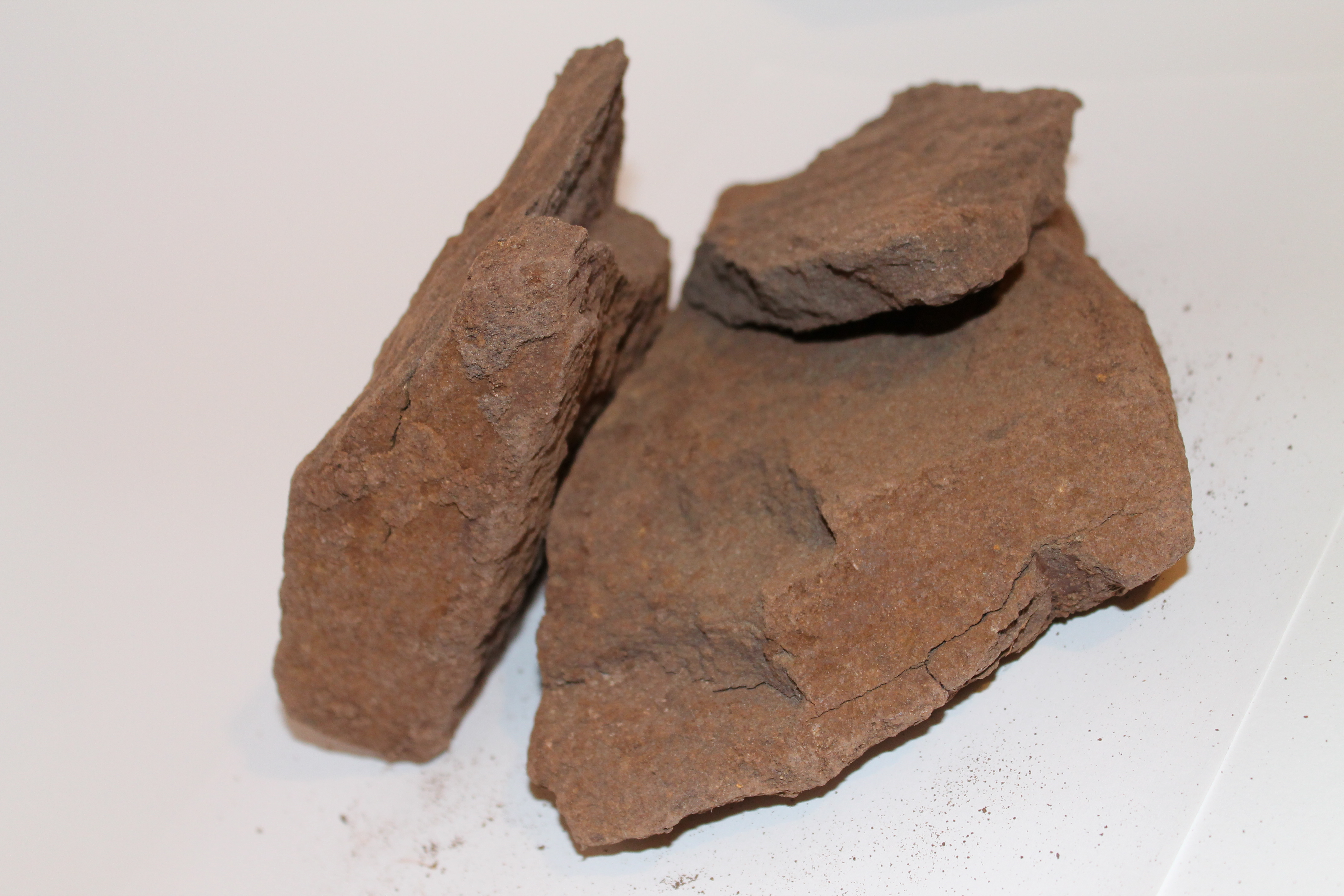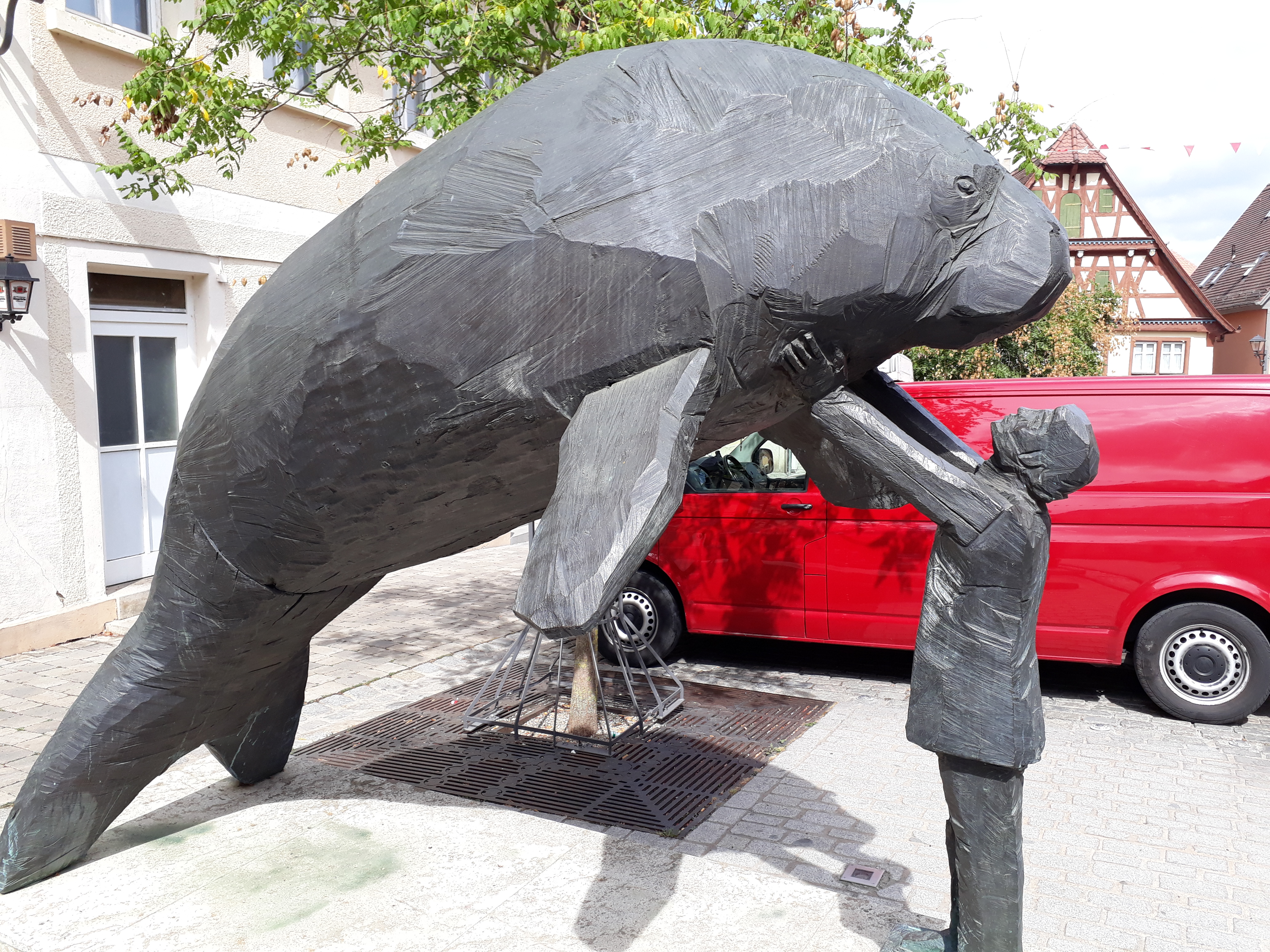|
Mountain Soap
Mountain soap (, , ),'' Nikolay Shcheglov'', Mineralogy according to Mr. Haüy's system: part two. — St. Petersburg: In Marine Printing House, 1824. ''rock-soap'' or ''bolus''''Gerard Krefft''. Catalogue of the minerals and rocks in the collection of the Australian Museum. — Publisher: Thomas Richards, Government Press, 1873. — 132 p. — a partially outdated trivial name for a large group of clay minerals similar in properties from the group of hydrous layered aluminum silicates with variable composition. Minerals from the mountain soap group contain primarily silicates (44-46%), alumina (17-26%), iron oxides (6-10%) and water (13-25%). The mountain soap group included at different times up to two dozen mineral species and varieties. In different cases, this name could mean different minerals, most often ''halloysite'' (from the proper name), ''saponite'' (soapstone),'' A. N. Krishtofovich'', Geological Dictionary. Volume 1. — Moscow: State Publishing House of Geological ... [...More Info...] [...Related Items...] OR: [Wikipedia] [Google] [Baidu] |
Bentonite
Bentonite ( ) is an Absorption (chemistry), absorbent swelling clay consisting mostly of montmorillonite (a type of smectite) which can either be Na-montmorillonite or Ca-montmorillonite. Na-montmorillonite has a considerably greater swelling capacity than Ca-montmorillonite. Bentonite usually forms from the weathering of volcanic ash in seawater, or by hydrothermal circulation through the porosity of volcanic ash beds, which converts (devitrification) the volcanic glass (obsidian, rhyolite, dacite) present in the ash into clay minerals. In the mineral alteration process, a large fraction (up to 40–50 wt.%) of amorphous silica is dissolution (chemistry), dissolved and leaching (agriculture), leached away, leaving the bentonite deposit in place. Bentonite beds are white or pale blue or green (traces of redox, reduced ) in fresh exposures, turning to a cream color and then yellow, red, or brown (traces of oxidation, oxidized ) as the exposure is weathered further. As a swel ... [...More Info...] [...Related Items...] OR: [Wikipedia] [Google] [Baidu] |
Aluminosilicate
Aluminosilicate refers to materials containing anionic Si-O-Al linkages. Commonly, the associate cations are sodium (Na+), potassium (K+) and protons (H+). Such materials occur as minerals, coal combustion products and as synthetic materials, often in the form of zeolites. Both synthetic and natural aluminosilicates are of technical significance as structural materials, catalysts, and reagents. Important representatives Feldspar is a common tectosilicate aluminosilicate mineral made of potassium, sodium, and calcium cations surrounded by a negatively charged network of silicon, aluminium and oxygen atoms. Many aluminosilicates are synthesized by reactions of silicates, aluminates, and other compounds. They have the general formula where M+ is usually H+ and Na+. The Si/Al ratio is variable, which provides a means to tune the properties. Many of these materials are porous and exhibit properties of industrial value. Naturally occurring microporous, hydrous aluminosilicate m ... [...More Info...] [...Related Items...] OR: [Wikipedia] [Google] [Baidu] |
Catalysis
Catalysis () is the increase in rate of a chemical reaction due to an added substance known as a catalyst (). Catalysts are not consumed by the reaction and remain unchanged after it. If the reaction is rapid and the catalyst recycles quickly, very small amounts of catalyst often suffice; mixing, surface area, and temperature are important factors in reaction rate. Catalysts generally react with one or more reactants to form intermediates that subsequently give the final reaction product, in the process of regenerating the catalyst. The rate increase occurs because the catalyst allows the reaction to occur by an alternative mechanism which may be much faster than the noncatalyzed mechanism. However the noncatalyzed mechanism does remain possible, so that the total rate (catalyzed plus noncatalyzed) can only increase in the presence of the catalyst and never decrease. Catalysis may be classified as either homogeneous, whose components are dispersed in the same phase (usual ... [...More Info...] [...Related Items...] OR: [Wikipedia] [Google] [Baidu] |
Georg Wilhelm Steller
Georg Wilhelm Steller (10 March 1709 – 14 November 1746) was a German-born naturalist and explorer who contributed to the fields of biology, zoology, and ethnography. He participated in the Great Northern Expedition (1733–1743) and his observations of the natural world helped the exploration and documentation of the flora and fauna of the North Pacific region. Steller pursued studies in theology and medicine before turning his attention to the natural sciences. In 1734, he joined the Russian Academy of Sciences as a physician, eventually being selected to accompany Bering's expedition to the uncharted waters between Siberia and North America. Steller kept detailed records of species and cultures encountered, as well as ocean currents during the journey. Steller discovered many new species, as he documented numerous plants and animals, many of which were previously unknown to Western science. Notable among his discoveries was the Steller's sea cow and Steller's sea eagle. ... [...More Info...] [...Related Items...] OR: [Wikipedia] [Google] [Baidu] |
Soapstone
Soapstone (also known as steatite or soaprock) is a talc-schist, which is a type of metamorphic rock. It is composed largely of the magnesium-rich mineral talc. It is produced by dynamothermal metamorphism and metasomatism, which occur in subduction zones, changing rocks by heat and pressure, with influx of fluids but without melting. It has been a carving medium for thousands of years. Terminology The definitions of the terms "steatite" and "soapstone" vary with the field of study. In geology, steatite is a rock that is, to a very large extent, composed of talc. The mining industry defines steatite as a high-purity talc rock that is suitable for the manufacturing of, for example, insulators; the lesser grades of the mineral can be called simply "talc rock". Steatite can be used both in lumps ("block steatite", "lava steatite", "lava grade talc"), and in the ground form. While the geologists logically will use "steatite" to designate both forms, in the industry, "steatite" ... [...More Info...] [...Related Items...] OR: [Wikipedia] [Google] [Baidu] |
Fulling
Fulling, also known as tucking or walking ( Scots: ''waukin'', hence often spelt waulking in Scottish English), is a step in woollen clothmaking which involves the cleansing of woven cloth (particularly wool) to eliminate ( lanolin) oils, dirt, and other impurities, and to make it shrink by friction and pressure. The work delivers a smooth, tightly finished fabric that is insulating and water-repellent. Well-known examples are duffel cloth, first produced in Flanders in the 14th century, and loden, produced in Austria from the 16th century on. Waulking could be done with the hands and feet. In medieval Europe, it was done in water-powered fulling mills. After the Industrial Revolution, coal and electric power were used. Felting refers more generally to the interlocking of loose wool fibers; they need not be spun and woven first. Process Fulling involves two processes: scouring (cleaning) and milling (thickening). Removing the oils encourages felting, and the cloth ... [...More Info...] [...Related Items...] OR: [Wikipedia] [Google] [Baidu] |
Robert Jameson
image:Robert Jameson.jpg, Robert Jameson Robert Jameson Fellow of the Royal Society, FRS FRSE (11 July 1774 – 19 April 1854) was a Scottish natural history, naturalist and mineralogist. As Regius Professor of Natural History at the University of Edinburgh for fifty years, developing his predecessor John Walker (natural historian), John Walker's concepts based on mineralogy into geological theories of Neptunism which held sway into the 1830s. Jameson is notable for his advanced scholarship, and his museum collection. The minerals and fossils collection of the Museum of Edinburgh University became one of the largest in Europe during Jameson's long tenure at the university. Early life Jameson was born in Leith on 11 July 1774, the son of Catherine Paton (1750–94) and Thomas Jameson (c.1750–1802), a soap manufacturer on Rotten Row (now Water Street). They lived on Sherrif Brae. His early education was spent at Leith Grammar School, after which he became the apprentice of t ... [...More Info...] [...Related Items...] OR: [Wikipedia] [Google] [Baidu] |
Metaphor
A metaphor is a figure of speech that, for rhetorical effect, directly refers to one thing by mentioning another. It may provide, or obscure, clarity or identify hidden similarities between two different ideas. Metaphors are usually meant to create a likeness or an Analogy, analogy. Analysts group metaphors with other types of figurative language, such as antithesis, hyperbole, metonymy, and simile. According to Grammarly, "Figurative language examples include similes, metaphors, personification, hyperbole, allusions, and idioms." One of the most commonly cited examples of a metaphor in English literature comes from the "All the world's a stage" monologue from ''As You Like It'': All the world's a stage, And all the men and women merely players; They have their exits and their entrances And one man in his time plays many parts, His Acts being seven ages. At first, the infant... :—William Shakespeare, ''As You Like It'', 2/7 This quotation expresses a metaphor because the w ... [...More Info...] [...Related Items...] OR: [Wikipedia] [Google] [Baidu] |
Sorption
Sorption is a physical and chemical process by which one substance becomes attached to another. Specific cases of sorption are treated in the following articles: ; Absorption: "the incorporation of a substance in one state into another of a different state" (e.g., liquids being absorbed by a solid or gases being absorbed by a liquid); ; Adsorption: The physical adherence or bonding of ions and molecules onto the surface of another phase (e.g., reagents adsorbed to a solid catalyst surface); ; Ion exchange: An exchange of ions between two electrolytes or between an electrolyte solution and a complex. The reverse of sorption is desorption. Sorption rate The adsorption and absorption rate of a diluted solute in gas or liquid solution to a surface or interface can be calculated using Fick's laws of diffusion Fick's laws of diffusion describe diffusion and were first posited by Adolf Fick in 1855 on the basis of largely experimental results. They can be used to solve for the ... [...More Info...] [...Related Items...] OR: [Wikipedia] [Google] [Baidu] |







